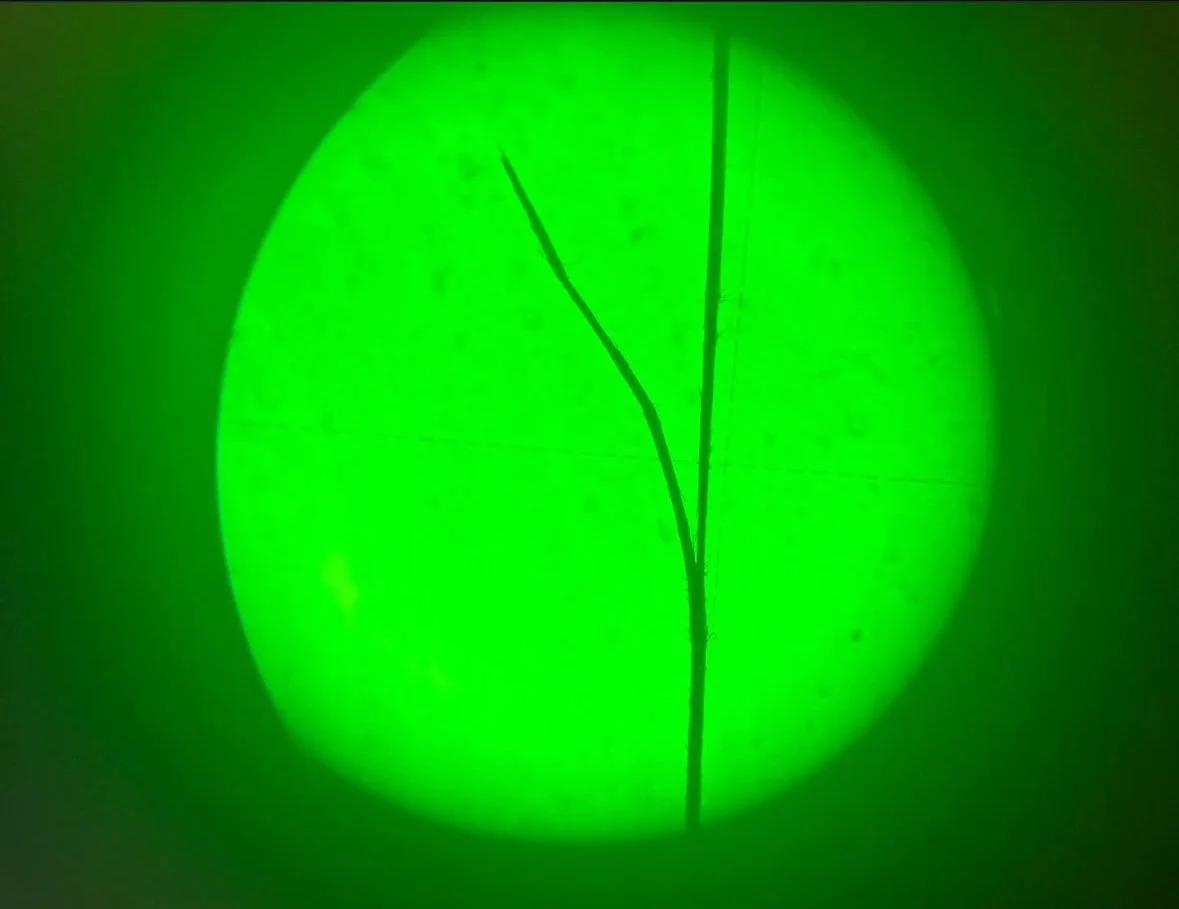The effect of heat treatment duration on the change in average hair diameter on heat treated hair strands.
Project Overview
This study explored the mechanical and structural effects of high-temperature exposure on human hair, addressing a question that intersects materials science, health, and consumer safety. By combining hands on experimentation with quantitative analysis and statistical modeling, the project uncovered how prolonged heat application fundamentally alters hair strand integrity.
Motivation
Heat styling is one of the most widespread cosmetic practices, yet its effects are rarely quantified through rigorous engineering methods. By treating hair strands as a structural material subject to thermal loading, I applied engineering principles to a question with both scientific and consumer significance.
Research Methodology
Sample Preparation: Twenty hair strands were prepared on precision-aligned sampler sets to ensure repeatability.
Instrumentation: A toolmaker’s microscope (60x magnification) was used to measure micro-scale diameter changes.
Controlled Heat Treatment: Strands were exposed to a ceramic flat iron at 450°F in timed increments of 2–8 minutes.
Data Collection: Five measurements were recorded per strand at each stage, capturing changes in average diameter (∆d).
Statistical Validation: Data underwent error testing, variance analysis, and both f-tests and t-tests to confirm statistical significance.
Key Insights
Progressive Damage: Hair diameter initially expands under heat, signaling cuticle stress and structural damage (also known as split ends).
Critical Threshold: After six minutes at 450°F, strands consistently broke, confirming a structural failure point.
Industry Relevance: Findings suggest a quantifiable limit to safe styling practices, offering insight that could inform cosmetic science and product development.
Significance & Impact
This research bridges engineering analysis with applied health and beauty science. The results provide quantitative evidence of heat damage mechanisms while translating into practical recommendations: limiting continuous high-heat styling to under six minutes can reduce structural degradation.
Beyond hair care, this project demonstrates the power of applying materials science principles to everyday phenomena. By reframing a common routine through an engineering lens, it highlights how rigorous testing and data analysis can influence consumer safety, cosmetic technology, and broader biomaterials research.
Acknowledgments
This project was made possible through the mentorship of Dr. Murat Tiryakioglu and the use of advanced microscopy equipment provided by Jacksonville University’s engineering lab.
Images of heat-treated hair under microscope
Materials used for this experiment.
Correlation between time interval heat treated and average hair strand diameter
Residuals vs Z values to test the first assumption of error




